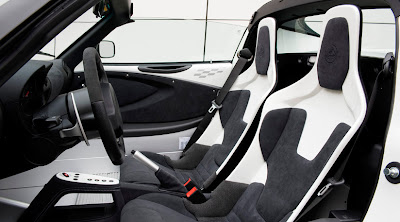CAR GARAGE | Lotus Elise (2016) | Inside, the 2016 Lotus Elise design should mimic the general feel of its bigger brothers, but in simplified form. Heavily sculpted seats should be high-back buckets - what else for a purist sports car?. The Lotus Elise debuted in 1996 and started eight years later the U.S. sale. Small, light, and elemental, with a rear / mid-engine layout, 4-cylinder power, and lift-off "targa" roof panel, this British 2-seater earned instant, near-universal acclaim as one of the world's best handling sports cars. The Elise has seen since Numerous changes, though none to the basic design. Tellingly, however, the Elise has never made a tiny profit for Lotus Cars.
To grow into a viable sales Lotus-and-image rival for premium performance brands like Aston Martin, Ferrari, Jaguar, and Porsche. Dimensionally, the 2016 Lotus Elise will be a sea change from today's pocket-size sports car, measuring some 8.4 inches longer, 5.1 inches Wider, Taller and 5.6 inches. It will also be a whopping 430 pounds heavier - at about 2.415 pounds - According to Lotus. The size and weight gains partly stem from the advent of crash-test regulations That did not exist when the original Elise was designed. They also Reflect Lotus' desire to give its entry-level model of broader market appeal via a roomier cockpit and Easier entry / exit.
The Elise has a shorter nose and tail than the others, but shares a wedge "cab forward" That stance emphasizes the engine's being right behind the cockpit. Other elements include a gaping familial trapezoidal grille; narrow headlamp clusters; bulged fenders forming a prominent "shoulder line"; down sloped "Flying Buttress" rear roof pillars flanking a louvered engine cover; and a curved back panel with complex sculpting, slim tail lamps, and a low-riding water diffuser.
Power for the 2016 Lotus Elise will come from a force-fed 2.0-liter 4-cylinder engine, sourced from Toyota Likely. Lotus has been using Toyota engines in the Elise since 2004 and in its newer mid-Evora V6 coupe, with permission to modify the mechanical features and control software to suit its own purposes. performance-boosting mild-hybrid system will be available - more on that in the "Notable Feature" section - and will include a fuel-saving engine idle-stop feature. Transmissions will comprise a straight 6-speed manual and a 6-speed dual-clutch automated manual That behaves somewhat like a conventional automatic.
With all this, plus carrying only a little over 8 pounds / horsepower, the 2016 Lotus Elise should be at least as quick as today's top-performing models and faster Perhaps, this Despite the added size and weight. Lotus claims 0-60 mph in under 4.5 seconds and a top speed of over 167 mph. Ethel though is still a long way from finalizing the standard and optional features, the Paris / LA Suggests the concept Lotus Elise 2016 will be much better appointed than the car it replaces rather spartan. We expect base equipment will include air conditioning, a good-quality audio system, power windows, and key less entry / engine start. As with today's Elise, a pared-down "club racer" model is Likely to be Offered at some point, Perhaps fitted with special lightweight seats and wheels, four-point racing harnesses instead of normal three-point seat belts, less sound insulation, and so on.












